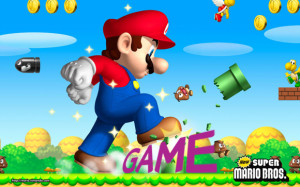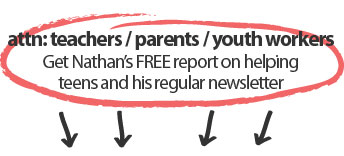 How to effectively use rewards to motivate students
How to effectively use rewards to motivate students
As a true blue Gen Y I love games!
I love board games, computer games, real life games, role playing games – any kind of games!
More recently I’ve been studying how game dynamics and game mechanics (often referred to a Gamification) can be applied to engagement, motivation and well being in youth and young adults in the context of the classroom and beyond, and how the brain and our psychology responds to each of the elements of gaming.
One powerful game dynamic is reward and the psychology of reward with regards to motivation and engagement.
The use of game dynamics and game mechanics in a real world setting, and more specifically reward, has been shown to positively influence a young persons motivation and behaviour when used correctly and with purpose.
Studies into the development of the teenage and young adult brain show us the more “advanced” parts of the brain, such as the prefrontal cortex, are not fully developed until well into the 20’s.
In behavioural terms this means that the part of the brain responsible for decision making, planning ahead, impulse control, reasoning, logic and risk assessment is last to come online – impacting on the way young people behave in regards to weighing up risk and reward, assessing negative consequences, and having an increased motivation for new experiences.
With that in mind here are two key elements to understand when thinking about how to reward youth and young adults for greater motivation and engagement:
1. Immediate and Smaller Rewards
My research has shown that negative rewards or punishment has less of an impact on behaviour modification than offering smaller more immediate rewards directly linked to positive behaviour.
Studies show that smaller and more immediate rewards are more engaging and motivating for adolescents than larger and more distant rewards as they are more motivated by the immediate and have less of a capacity to see into the future.
Rewards which are slightly random in nature (not always linked to positive behaviour, achievement or activity) can be powerful in creating high levels of engagement and participation and more consistent activity.
Examples of rewards in Gamification might be: levelling up for killing 10 zombies, clearing a row in Tetris or getting fresh crops in Farmville.
The application of immediate and smaller rewards – as opposed to larger and more distant rewards, with the combination of understanding the dynamics of gamification could look something like:
- Points for tasks that get completed
- Leaderboard to show performance
- Whole class tally to create team and encourage top performers to help lower performers
- Define levels to repeat tasks or to perform harder tasks
- Earning of badges can be tied to unlocking higher levels
- Physical rewards or points allow the purchase of rewards (get out of class 5 minutes early etc)
2. Positive Peer Recognition
Much evidence indicates that peer influence in adolescence can promote engagement in beneficial and prosocial behaviours.
We can all understand the negative impacts of peer pressure on youth and young adults, but it is often forgotten when it comes to positive peer recognition to increase engagement and motivation.
When young people receive recognition from their peers in a classroom or social setting it lights up the reward centres in the brain and reinforces the behaviour which earned the recognition.
When we tap into the power of positive peer recognition for reinforcing positive behaviours we can really boost the levels of engagement and motivation in the young people we work with.
Examples of positive peer recognition may be:
- Adopting a ‘Box Of Awesomeness” – where students are encouraged to write something encouraging and uplifting about another classmate every week
- Have students award random awards to other classmates on a regular basis
- Allocating points (as per above) to genuine public positive recognition of other classmates
- Creating a ‘Super Positive’ recognition reward for the most encouraging person of the week
By creating a deliberate rewards system with the young people you work with including small immediate rewards, linked to positive behaviour along with some more randomly delivered rewards and establishing some structures and rewards for encouraging positive peer recognition we can create environments where teens are not only encouraged and motivated to behave in a positive manner, but they can learn to encourage others.
Check out the remaining articles relating to “How to motivate and engage teenagers”:
- The silver bullet for student engagement
- The power of empathy in student engagement
- Emotional Intelligence in student engagement
- How to use rewards to motivate students
- How to increase student engagement
- How to effectively communicate with teens
I am regularly running professional development workshops for teachers, youth workers and professionals around based on the principals of developmental psychology, positive psychology and neuroscience to help adults understand teenagers and how best to engage, inspire and empower them to know themselves, be their best and make a positive difference in the world.
I’d love to talk to you about how I might be able to support your organisation and empower you to connect with, engage and motivate the young people you work with – for booking enquiries click here!

